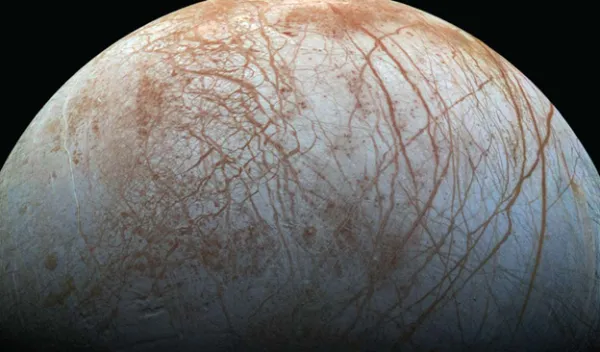
Freezing points of salty liquid oceans on icy moons of distant planets
Scientists at the University of Washington and the University of California, Berkeley, combined geoscience and engineering to study watery oceans on the icy moons of distant planets. The research, partially supported by funding from the U.S. National Science Foundation, was conducted to detect signs of extraterrestrial life and prepare for interplanetary exploration.
"The more a liquid is stable, the more promising it is for habitability," said co-corresponding author of the paper Baptiste Journaux. "Our results show that the cold, salty, high-pressure liquids found in the deep oceans of other planets' moons can remain liquid to much cooler temperatures than they would at lower pressures. This extends the range of possible habitats on icy moons and will allow us to pinpoint where we should look for biosignatures, or signs of life."
The ice-encrusted moons of Jupiter and Saturn are potential hosts of extraterrestrial life and are believed to have liquid oceans that are significantly larger than oceans on Earth. "Despite its designation as the 'blue marble,' Earth is remarkably dry when compared to these worlds," Journaux said.
The oceans on the icy moons orbiting the largest planets in the solar system can be more than 400 miles deep. To compare, the Mariana Trench, the deepest ocean trench on Earth, is about seven miles deep.
"We know that water supports life, but the major parts of the oceans on these moons are likely below 0 degrees Celsius and at pressures higher than anything experienced on Earth," Journaux said. "We need to know how cold an ocean can get before entirely freezing, including in its deepest abyss."
The icy moon oceans likely contain a variety of salts. The researchers focused on eutectics, the lowest temperature at which a salt solution can remain liquid and used the data to simulate the conditions on the distant moons.
The team worked with engineers to test different salt solutions at pressures of up to 3,000 times atmospheric pressure -- about three times the pressure in the depths of the Mariana Trench.
"Knowing the lowest temperature possible for salty water to remain a liquid at high pressures is integral to understanding how extraterrestrial life could exist and thrive in the deep oceans of these icy ocean worlds," said co-corresponding author Matthew Powell-Palm.
"The new data obtained from this study may help further researchers' understanding of the complex geological processes observed in these icy ocean worlds," Journaux said.
